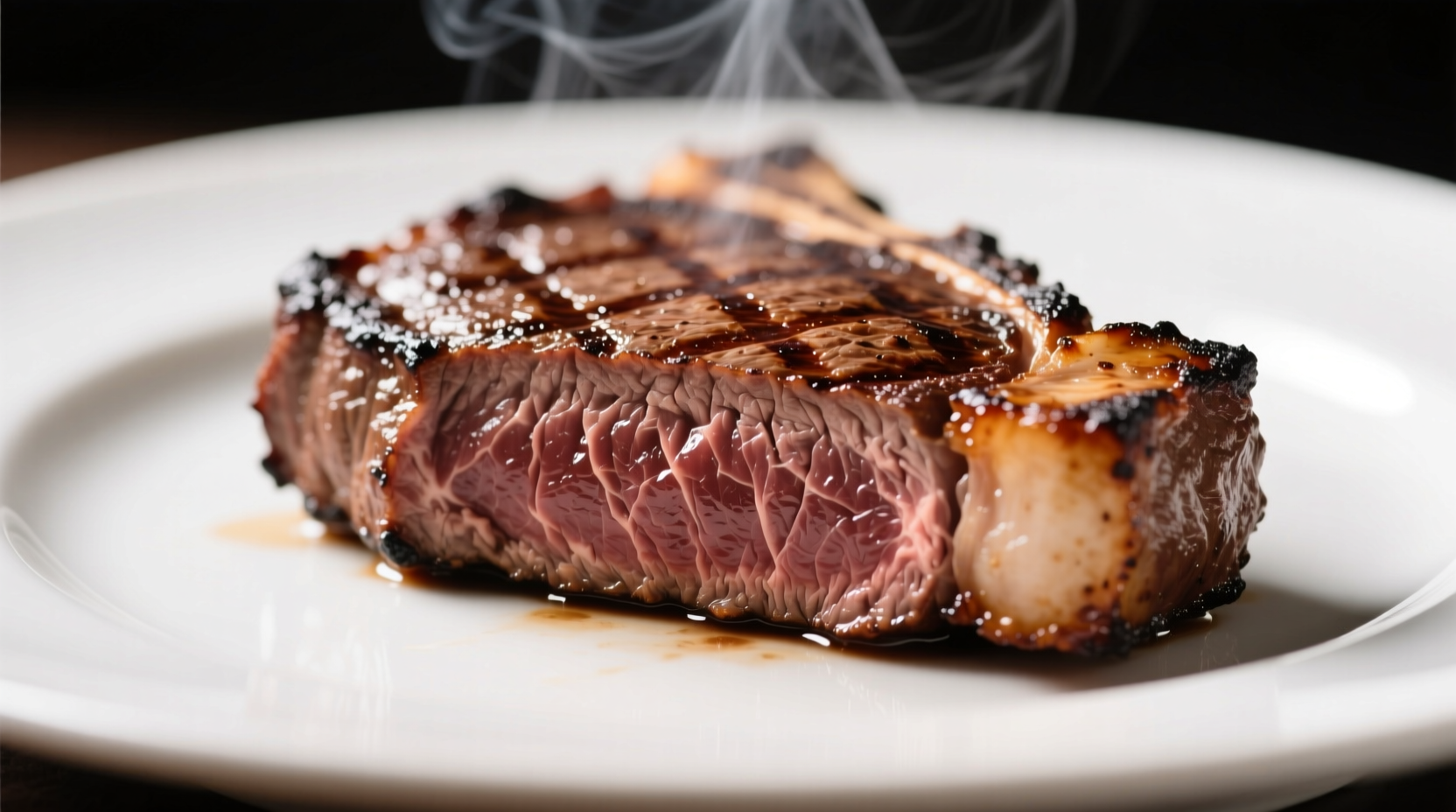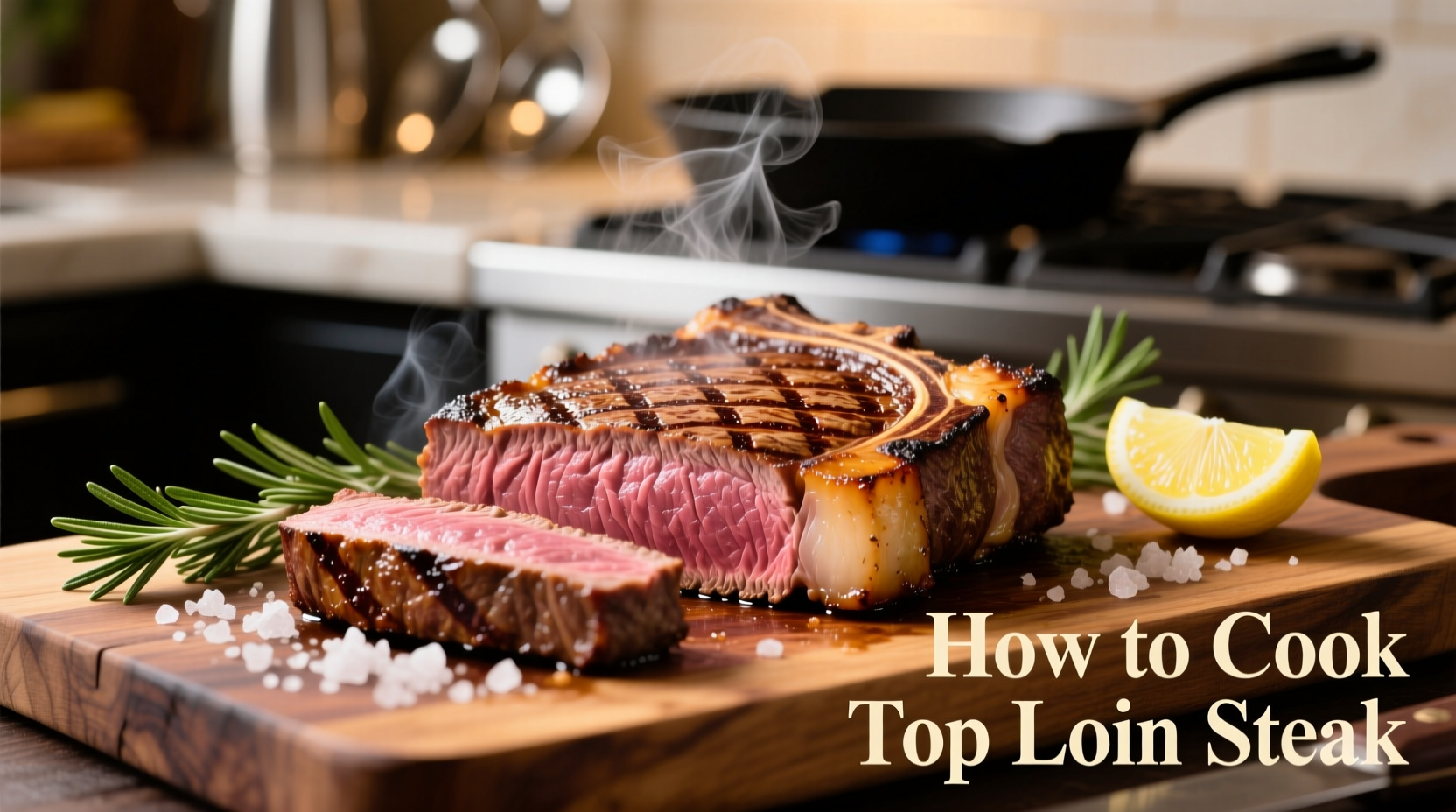For a perfectly cooked top loin steak, bring the steak to room temperature, season generously with salt and pepper, sear in a hot cast-iron skillet for 3-4 minutes per side, then finish in a 400°F oven until reaching your desired internal temperature (130°F for medium-rare). Rest for 8-10 minutes before slicing against the grain.
The Ultimate Guide to Cooking Top Loin Steak Like a Pro
Nothing beats a perfectly cooked top loin steak with its rich marbling and robust beef flavor. This guide delivers restaurant-quality results in your home kitchen through precise temperature control, proper timing, and professional techniques that transform this affordable cut into an extraordinary meal.
Why Top Loin Steak Deserves Your Attention
Top loin steak, often labeled as strip steak or New York strip, offers an ideal balance of tenderness and beefy flavor at a more accessible price point than ribeye or filet mignon. According to the USDA Agricultural Marketing Service, top loin accounts for nearly 15% of all steak sales in the United States due to its consistent quality and versatility across cooking methods.
Preparation: Setting the Stage for Success
Proper preparation separates good steaks from exceptional ones. Follow these critical steps before heat ever touches your meat:
Selection and Temperature Management
Choose USDA Choice or Prime grade top loin steaks with even marbling throughout. Remove your steak from the refrigerator 60-90 minutes before cooking to bring it to room temperature—this ensures even cooking from edge to center. Never skip this step, as cooking a cold steak directly from the refrigerator creates significant temperature differentials that lead to uneven doneness.
Seasoning Strategy
Generously season both sides with kosher salt (1 teaspoon per pound) and freshly ground black pepper. For enhanced flavor development, consider the dry-brine method: salt the steak 24-48 hours in advance and store uncovered in the refrigerator. This technique, validated by the American Meat Science Association, improves moisture retention and creates a superior crust during searing.

Cooking Methods: Mastering Your Heat Source
Top loin steak responds well to multiple cooking techniques. Choose the method that best matches your equipment and desired outcome:
Cast-Iron Skillet Method (Recommended)
This technique delivers the most consistent results for home cooks:
- Preheat oven to 400°F
- Heat cast-iron skillet over medium-high heat for 5 minutes until smoking slightly
- Add high-smoke point oil (avocado or grapeseed)
- Sear steak 3-4 minutes per side until deep brown crust forms
- Transfer skillet to oven and cook 4-8 minutes depending on thickness
- Monitor internal temperature with instant-read thermometer
Grill Method
For outdoor cooking enthusiasts:
- Create two-zone fire with direct and indirect heat areas
- Sear over direct heat 3-4 minutes per side
- Move to indirect heat and continue cooking to desired temperature
- Maintain grill temperature between 375-400°F
| Cooking Method | Prep Time | Cook Time | Best For |
|---|---|---|---|
| Cast-Iron Skillet | 90 min | 15-20 min | Consistent indoor results |
| Grill | 90 min | 18-25 min | Smoky flavor profile |
| Sous Vide + Sear | 2-4 hours | 3-5 min | Precision doneness control |
Temperature Control: The Secret to Perfect Doneness
Temperature monitoring is non-negotiable for steak perfection. The USDA Food Safety and Inspection Service recommends minimum internal temperatures for beef, but steak connoisseurs prefer these precise targets:
- Rare: 120-125°F (bright red center)
- Medium-rare: 130-135°F (warm red center) – Recommended for top loin
- Medium: 140-145°F (warm pink center)
- Medium-well: 150-155°F (slight pink center)
- Well-done: 160°F+ (little to no pink)
Remove your steak from heat 5°F below your target temperature, as carryover cooking will continue raising the internal temperature during resting. This critical detail prevents overcooking and ensures your top loin steak reaches perfect doneness.
The Non-Negotiable Resting Period
Resting allows juices to redistribute throughout the steak. Cutting too soon releases precious juices onto your cutting board rather than staying in the meat. Follow these resting guidelines based on steak thickness:
- 1-inch thick: 8 minutes
- 1.5-inch thick: 10 minutes
- 2-inch thick: 12-15 minutes
During this time, loosely tent with foil to maintain warmth without trapping steam that would soften your beautiful crust. This resting phase completes the cooking process and transforms your top loin steak from good to extraordinary.
Serving Your Masterpiece
For optimal texture and flavor, slice your top loin steak against the grain into 1/2-inch thick pieces. The grain refers to the direction of the muscle fibers—slicing perpendicular to these fibers shortens them, making each bite more tender.
Pair your perfectly cooked top loin with complementary sides that enhance rather than compete with its rich flavor profile:
- Garlic mashed potatoes
- Roasted asparagus with lemon zest
- Creamed spinach
- Simple arugula salad with balsamic
Avoid These Common Top Loin Steak Mistakes
Even experienced cooks make these critical errors when preparing top loin steak:
- Skipping the room temperature step – leads to uneven cooking
- Overcrowding the pan – causes steaming instead of searing
- Not using a thermometer – guessing doneness results in inconsistent outcomes
- Cutting too soon after cooking – loses precious juices
- Using low smoke-point oils – creates bitter flavors and smoke
Top Loin vs. Other Popular Steak Cuts
Understanding how top loin compares to other cuts helps you select the right steak for your cooking method and preferences:
- Ribeye – More marbling and fat content, richer flavor, better for slower cooking
- Filet Mignon – Extremely tender but less flavorful, requires careful temperature control
- Porterhouse/T-bone – Contains both tenderloin and top loin sections, requires two-temperature cooking
- Top Loin – Balanced tenderness and flavor, consistent thickness, ideal for precise cooking
Top loin's uniform thickness makes it particularly well-suited for home cooking, as it requires less technique to achieve even doneness compared to cuts with varying thicknesses.











 浙公网安备
33010002000092号
浙公网安备
33010002000092号 浙B2-20120091-4
浙B2-20120091-4